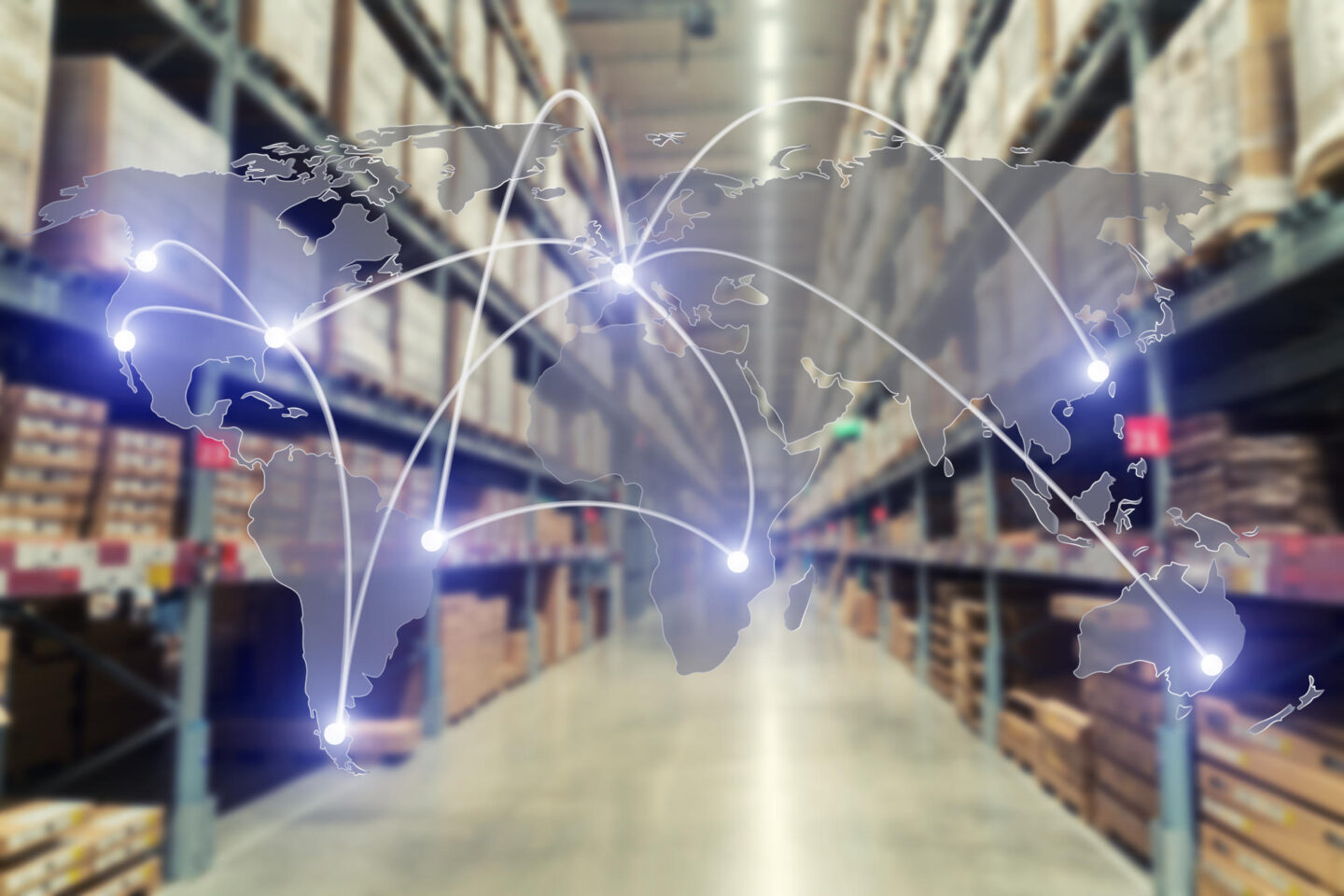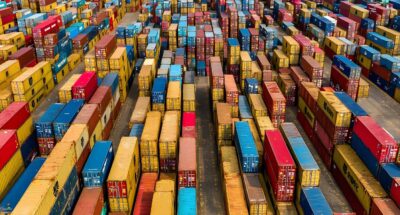
The geopoliticization of supply chains
The COVID pandemic elevated geopolitical understanding as a critical consideration for supply chain managers – and it remains essential to their success today. ...

by Ralf W. Seifert, Katrin Siebenbürger Hacki Published April 11, 2025 in Supply chain • 9 min read
Exclusive data gathered over the past decade highlights the specific challenges leaders face when transforming supply chains as an integral part of a customer-facing company. Here are the key insights.
Against the backdrop of unprecedented US tariffs which have caused global stock markets to tumble, companies will be facing complex and rapidly shifting cost pressures and strong fluctuations in demand, both in volume and geography. The speed with which leaders can achieve significant supply chain transformations is an increasingly urgent factor in a company’s success.
In the 2022 edition of our Global Supply Chain Survey, we saw that the agenda for supply chain leaders had kept growing. Traditional topics – such as integrating supply chain and business strategy, supply chain segmentation, and systematically applying sales operations and planning (SO&P) processes – consistently ranked as most important in many organizations. But newer topics, such as supply chain resilience and Cybersecurity, increasingly preoccupied leaders even after the pandemic.
Three years later, while complexity persists, we see that many companies are struggling to transform their supply chain operations to build competitive, customer-facing, and resilient organizations. The 2025 Global Supply Chain Survey tabulates the responses of 300 senior supply chain professionals from leading international companies across a range of more than 20 industries. Survey participants rank the importance of critical topics and assess how well their organization is performing in each area. Notably, 2025 survey respondents report major gaps between the relative importance and the implementation progress achieved to date in many critical topics.
Topping the priority agendas in 2025 for supply chain leaders over the next five years are:
The singling out of these three topics reflects the challenge of aligning supply chain operations with broader business goals, along with the need to address evolving geopolitical, environmental, and digital risks and uncertainties.

“While supply chain executives are busier than ever dealing with a host of issues, making tangible progress is slow.”
While supply chain executives are busier than ever dealing with a host of issues, making tangible progress is slow. At the same time, supply chain leadership has become a strategic imperative – a business-critical function for securing value capture and revenue growth. Rising geopolitical uncertainty – and its impact on the footprint of future supply chains – needs to be considered as part of the process. In recognition of this strategic dimension, today’s supply chain leader must have a seat at the decision-making table of every organization to drive change.
The 2025 data suggests that technologies such as artificial intelligence (AI), machine learning (ML), large language models (LLM), generative AI for supply chains, touchless flows, digital twins, supply control towers, and cognitive collaboration centers are ever more critical, showing the biggest jumps in importance since 2022. But the ability to deploy those technologies requires strong data foundations which are often not yet in place in many organizations.
The 2025 results also show that 3D printing/additive manufacturing and other technologies to manufacture goods, as well as blockchain and self-driving vehicles, are lingering at the bottom of the list of priorities for leaders, with blockchain and last-mile delivery experiencing the biggest decline in perceived relevance since 2016. This might suggest that these topics have failed to deliver tangible results, that the hype cycle has blown over, or that they have simply been overshadowed for the time being by more pressing priorities and opportunities.
More than 70% of supply chain transformation projects either fail or lag behind their envisaged targets.
Navigating geopolitics and changing trade agreements debuted near the top of the priorities list (sixth place) in 2025, underscoring the growing pressure on supply chain leaders to manage regulatory uncertainty, trade disruptions, and evolving environmental, social, and governance requirements. It remains unclear how quickly those new requirements can be addressed.
From 2022 to 2025, survey respondents confirmed that progress in implementing key supply chain priorities remained insufficient, even in top-ranked areas. According to the leaders we surveyed, the largest execution discrepancies in supply chain organizations today lie in:
But while leaders may perceive a lag in execution, these areas of digitalization show steady progress in implementation over the 2016, 2019, 2022, and 2025 surveys, underscoring their importance to all aspects of modern supply chain management.
We have seen relative progress over the past decade in the management of supply chain compliance and globalization of supply chain footprint, where the gap between importance and attainment is nearly closed. Indeed, we may have gone too far on globalization. The issue of sustainability in the supply chain sees implementation improve, while at the same time, importance decreases markedly – likely as a reaction to the postponed sustainability regulations in the EU and the exit of the US from the Paris Agreement.
In the face of the supply chain function’s increasing complexity, it is perhaps not surprising that leaders find it difficult to execute on maintaining a talent pool, supply chain resilience, and governance, all of which show regression in implementation in the 2025 results.
Without an integrative approach supported by senior leadership for a sustained period, progress on key dimensions of supply chain management risks being slow and challenging. More than 70% of supply chain transformation projects either fail or lag behind their envisaged targets.
Today, persistent shockwaves change business priorities almost quarterly, undermining longstanding business models in the process.
Digesting the results of the 2025 Survey, the future looks more challenging than the past. As Magdi Batato, former COO of Nestlé, observed to us in a recent interview: “You can’t be agile in your supply chain alone.” Many external partners in your ecosystem, and many internal stakeholders across various functions, also need to be aligned. Moreover, operating system changes like shifting a manufacturing footprint, maintaining world-class quality management systems, or rolling out new IT/ERP systems, require time. This is evident when reviewing the rate of progress over the past decade.
When we ran our first and second editions of the Survey in 2016 and 2019, a three-year cadence seemed appropriate. Today, persistent shockwaves change business priorities almost quarterly, undermining longstanding business models in the process. These include digital transformation, supply chain resilience (highlighted particularly during COVID-19), and sustainability and inflation pressures, alongside new geopolitical realities including sanctions, trade tariffs, and armed conflict in some regions.
Organizations must therefore take an integrative approach, supported by the executive team and prioritizing the following areas:
While COVID may seem a distant memory, it taught us that sudden market shocks can cause two to three years of global supply chain imbalances.

Professor of Operations Management at IMD
Ralf W. Seifert is Professor of Operations Management at IMD and co-author of The Digital Supply Chain Challenge: Breaking Through. He directs IMD’s Strategic Supply Chain Leadership (SSCL) program, which addresses both traditional supply chain strategy and implementation issues as well as digitalization trends and the impact of new technologies.

Independent research associate
Katrin Siebenbürger Hacki supports IMD as an independent research associate. Before founding her consultancy, she worked in the EMEA divisions of Medtronic, Intuitive Surgical, and Honeywell, focusing on sales force excellence, analytics, and commercial execution. She holds an MBA from IMD.

November 3, 2025 • by Ralf W. Seifert, Richard Markoff in Supply chain
The COVID pandemic elevated geopolitical understanding as a critical consideration for supply chain managers – and it remains essential to their success today. ...

October 6, 2025 in Supply chain
To help set the agenda for supply chain leaders beyond 2025, this guide examines the industry priorities and outlines five strategic areas of focus for supply chain transformation....

October 6, 2025 • by Ralf W. Seifert, Katrin Siebenbürger Hacki in Supply chain
In this exclusive interview, Jeroen van Weesep, Senior Vice President and Head of Supply Chain of Personal Health at Philips, reflects on how supply chain leadership evolves to deliver value in an...

September 23, 2025 • by Michael R. Wade, Amit M. Joshi in Supply chain
Explore how generative AI is reshaping supply chains with IMD’s Carlos Cordon on Mike and Amit Talk Tech, driving smarter and adaptive solutions....
Explore first person business intelligence from top minds curated for a global executive audience